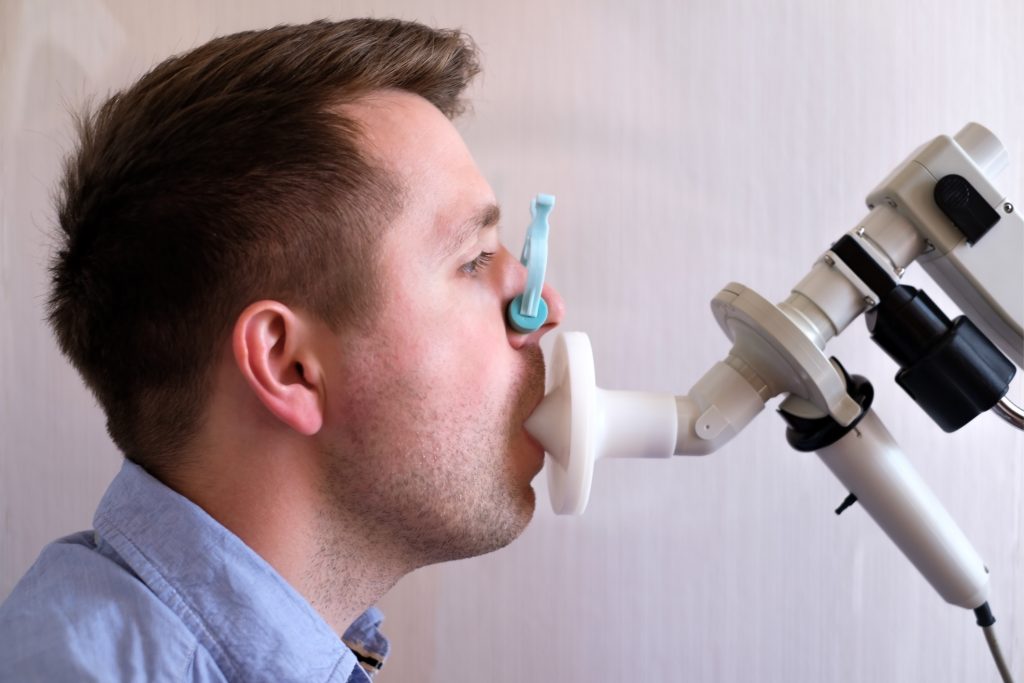Pulmonary Function Testing (PFT) may include a diffusing capacity (DLCO) test. This test measures how well gases like oxygen move from your lungs into your blood.
Download Diffusing Capacity (DLCO) as a PDF.
How do we measure diffusing capacity?
There are several ways to measure diffusing capacity. The “ten-second single breath-hold technique” is the most common. It’s an easy, five-step test:
- Put on a nose clip, so air can’t escape through your nose.
- Put the mouthpiece into your mouth.
- Breathe in deeply.
- Hold your breath for at least 10 seconds.
- Exhale.
How it works
When you inhale through the mouthpiece, you’re breathing in a test mixture of gases. When you exhale, the machine takes a sample of the gases you breathe out.
What your results mean
Carbon dioxide and oxygen are exchanged in your alveoli. These are tiny air sacs in your lungs. The diffusing capacity test tells your doctor whether your alveoli have been damaged.

What factors affect your Diffusion Capacity (DLCO)?
There are three major factors that determine your DLCO:
- The amount of lung tissue that comes in contact with blood vessels. This is called the lung blood interface.
- The thickness of the wall of the lung air sac. (The thicker the wall, the lower the diffusing capacity.)
- The pressure difference between the gas in the air sacs and the gas in your blood.
Some disease conditions may cause a lower than normal DLCO:
- These conditions decrease the area for diffusion:
- Pulmonary emphysema
- Lung lobe removal
- Lung tumor
- Anemia
- These conditions increase the thickness of the air sac wall:
- Pulmonary Fibrosis
- Farmer’s lung
- Asbestosis
- Congestive heart failure
Note: You’ll find many of these conditions listed in the Glossary of Pulmonary Function Terms.
For more in-depth information on this topic, please visit the Big Fat Reference Guide (BFRG). If you are enrolled in AlphaNet’s Subscriber Portal, you can access the BFRG here.
Download Diffusing Capacity (DLCO) as a PDF.

